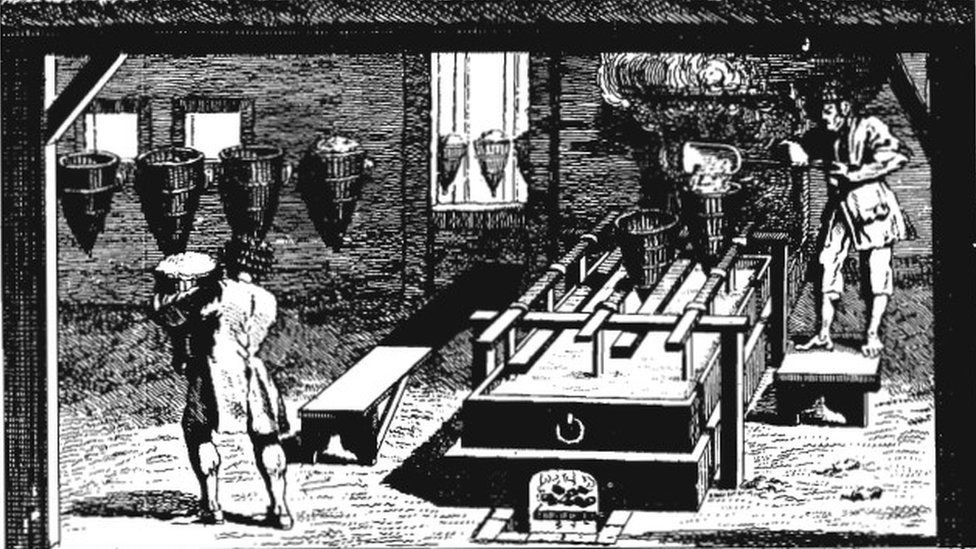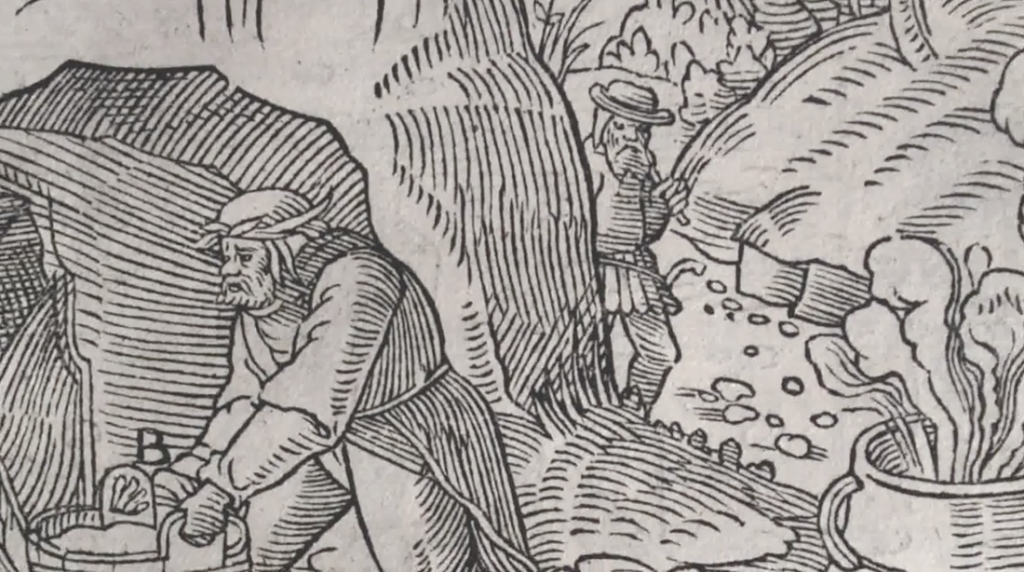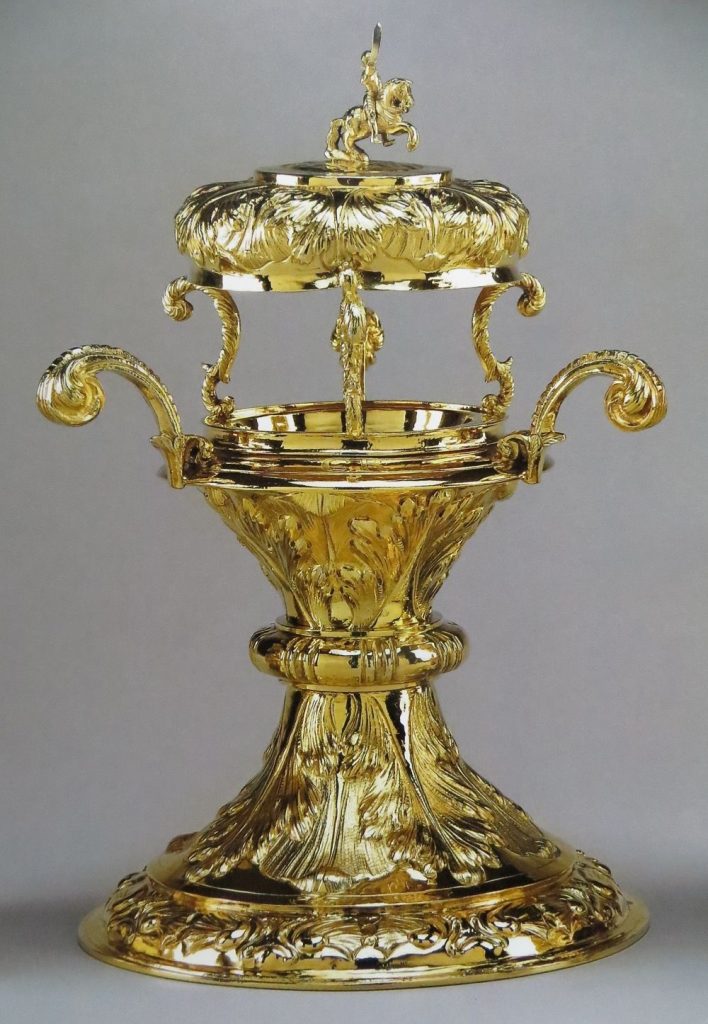In my saga The Seton Chronicles the family make their money through trade. I spent a fair amount of time trying to unpack just what Scotland would be trading across the North Sea (which was known as the German Ocean until just after WW1 ). In the 1500s hides, wool and fish were the main exports but increasingly salt became important too.

The production of one ton of salt required six tons of coal to keep the fire beneath the iron pans, which contained the sea water, burning over several days until the water evaporated. Several villages dotted around the Forth Estuary in the east of Scotland had the perfect combination of sea and coal seams needed.

In Culross, the coal was mined from beneath the sea, always a dangerous process but even more so in the 16th century. The owner of both mine and salt pans, Sir George Bruce, invented a horse drawn bucket and chain system that continually drained the seawater from his underground mine allowing the coal to be extracted. It was such a curiosity that visitors, including King James VI, came to Culross especially to see it.

Culross has become part of the Outlander tour circuit since scenes from the series were filmed there, so welcomes quite different visitors from the time of Sir George’s invention. Although the geographical information being given to Outlander tour groups seems a little hazy; visiting Culross the other day I came across a lovely American who was under the impression that she was in the Highlands.
Inevitably the salter serfs, who worked the salt pans had a hard life. The 1606 Act placed both salters and colliers in permanent bondage to their employers and anyone who absconded was to be punished as a thief – which could mean anything from having their ears chopped off to a hanging. Not only were they bound to their place of work for life, but any children they had were too. They were paid in salt and if you visit Culross palace you will see the small window they reached their cupped hands through to receive their ‘handful of salt’.

However to be worth your salt is an expression that pre-dates the poor salter serfs of Culross. It goes back to Roman times when their soldiers were paid in salt, and buying salt was seen as a shrewd investment. The origin of the word salary harks back to then. Sal was the Latin for salt, the soldiers month payment was called a salarium, which in French became salaire and then in English, salary.

To sit below the salt refers to your lowly status. As a valuable commodity, the salt cellar was placed on the high table of the Lord of the Manor and was readily available to him and his high ranking guests. And salt cellars were often very ornate underpinning the value of the commodity and the status of its owner.
The first mention of status defined by the salt cellar is credited to Bishop Joseph Hall, in verses he penned in 1597 …
A gentle Squire would gladly entertaine
Into his House some trencher-chapelaine,
Some willing man that might instruct his Sons,
And that could stand to good Conditions:
First that He lie vpon the Truckle-bed,
Whiles his yong maister lieth ore his hed;
Second that he do, on no default,
Euer presume to sit aboue the salt.
But writing satire was a risky business as the good bishop discovered when, in 1641, his levity led to a charge of high treason and he was imprisoned in the Tower of London.
References:
The Scottish People 1490-1625 by Maureen M Meikle
The Salt Industry and its Trade in Fife and Tayside c1570 to 1850 by C A Whatley

So interesting!
I was fascinated when I did the research. The post arose out of a walk around Culross (which is pronounced Cooros)